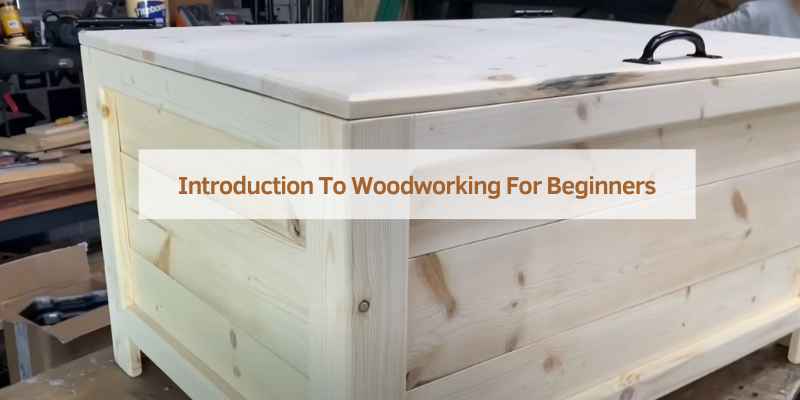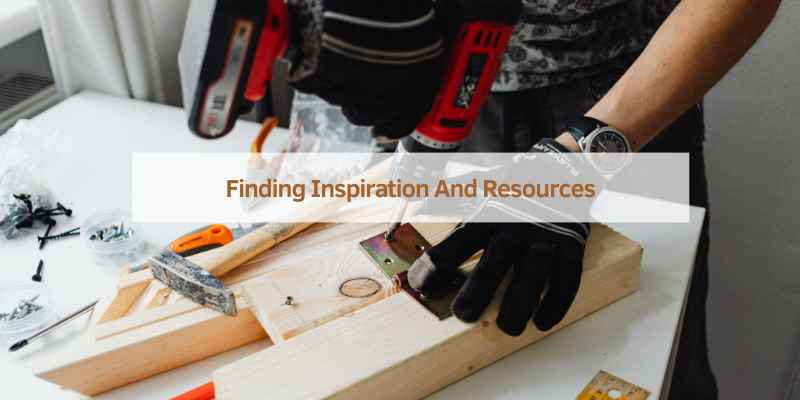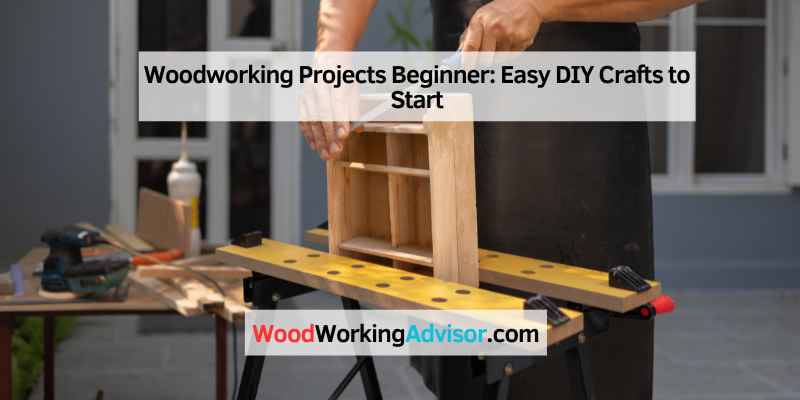For woodworking projects beginner, start with simple projects like a cutting board or plant stand. Gradually progress to more complex pieces like a coffee table or bookshelf.
Woodworking allows you to unleash your creativity while learning a valuable skill. From measuring and cutting to sanding and staining, each step teaches you precision and patience. Whether you’re a DIY enthusiast or looking to start a new hobby, woodworking offers a rewarding and fulfilling experience.
The satisfaction of creating something with your own hands and seeing it come to life is unmatched. So grab your tools, pick a project, and let your woodworking journey begin!
Introduction To Woodworking For Beginners
Why Choose Woodworking?
Woodworking is a gratifying hobby that allows beginners to create functional and aesthetically pleasing items from wood. It offers a sense of accomplishment and the opportunity to unleash your creativity.
Essential Tools For Beginners
As a beginner, it’s crucial to have the right tools for woodworking projects. Here are some essential tools:
- Saw: A saw is essential for cutting wood into various shapes and sizes.
- Hammer: A hammer is necessary for driving and removing nails.
- Measuring Tape: Measuring tape ensures accuracy in wood cutting and assembling.
- Screwdriver Set: A set of screwdrivers is needed for assembling wooden parts securely.

Starting Simple: Basic Projects To Consider
Embarking on woodworking projects as a beginner can be an exciting and fulfilling journey. Starting simple with basic projects is a great way to build foundational skills and gain confidence in working with wood. Here are a few basic projects to consider that are perfect for beginners.
Wooden Coasters
Creating wooden coasters is an excellent introductory project for woodworking novices. It involves basic cutting, sanding, and finishing techniques, allowing beginners to hone their skills while producing a practical and visually appealing item.
Simple Picture Frames
Constructing simple picture frames is another ideal project for beginners. This project introduces learners to the process of joining pieces of wood, as well as basic finishing methods. It offers a tangible end product that can be proudly displayed or given as a thoughtful gift.
Step-by-step Guide To Creating A Cutting Board
Embark on your woodworking journey with a beginner-friendly project: creating a cutting board. Follow this step-by-step guide to hone your skills and craft a functional piece for your kitchen.
Choosing The Right Wood
- Opt for hardwoods like maple or walnut for durability.
- Avoid softwoods as they may split easily.
- Consider grain patterns for visual appeal.
Cutting And Sanding Techniques
- Measure and mark the wood for precise cuts.
- Use a table saw for straight cuts.
- Sand the board smooth to prevent splinters.
Building A Wooden Planter Box
Crafting a wooden planter box is a perfect woodworking project for beginners. With just a few tools, some wood, and a little bit of time, you can create a beautiful and functional planter box for your garden or patio.
Building a Wooden Planter Box is a great beginner woodworking project that can be completed in just a few hours. A wooden planter box can add beauty to your garden, patio, or balcony. Not only does it provide a perfect place to display your favorite plants, but it also adds a touch of personalization to your outdoor space. In this section, we will discuss the materials needed and assembly instructions to build your very own wooden planter box.
Materials Needed
To build a wooden planter box, you will need the following materials:
- 1×6 cedar boards
- 1×2 cedar boards
- Wood glue
- 2-inch wood screws
- Drill
- Saw
- Sandpaper
- Measuring tape
Assembly Instructions
Follow these simple assembly instructions to build your wooden planter box:
- Cut four pieces of 1×6 cedar boards to the desired length for the sides of the planter box.
- Cut two pieces of 1×2 cedar boards to the same length as the sides of the planter box.
- Apply wood glue to the edges of the 1×6 cedar boards and attach them to the 1×2 cedar boards using 2-inch wood screws.
- Repeat the above steps to create the other side of the planter box.
- Attach the two sides together using wood glue and 2-inch wood screws.
- Cut a piece of 1×6 cedar board to fit the bottom of the planter box.
- Attach the bottom piece using wood glue and 2-inch wood screws.
- Sand the edges and surfaces of the planter box until smooth.
- Add your favorite plants and enjoy!
Building a wooden planter box is a simple and rewarding project for beginners. With just a few materials and some basic tools, you can create a beautiful addition to your outdoor space. Now that you have the materials needed and assembly instructions, it’s time to get started on your very own wooden planter box.
Crafting Your First Piece Of Furniture
Designing A Simple Stool
Start with a straightforward project like a stool.
Tools And Materials
Gather essential tools and materials to begin your project.
Finishing Touches: Staining And Painting
Enhance your woodworking projects as a beginner by mastering staining and painting for those perfect finishing touches. Elevate the appearance of your wood creations with these essential techniques. Experiment with different colors and finishes to create unique pieces that showcase your skills.
Selecting The Right Finish
When it comes to selecting the right finish for your woodworking project, there are several options to consider. Stains and paints both offer a way to add color to your project, but they have different properties and finishes. Stains penetrate the wood and enhance its natural grain, while paints provide a more opaque finish and can hide imperfections. It’s important to choose a finish that complements the wood and achieves the desired look.
Application Tips
Once you’ve selected the right finish for your project, it’s important to apply it correctly. Here are some application tips to ensure a smooth and professional-looking finish:
- Clean and prepare the surface before applying the finish
- Apply the finish in thin, even coats
- Use a high-quality brush or sprayer for a smooth finish
- Allow each coat to dry completely before applying the next one
- Lightly sand the surface between coats to ensure adhesion
Staining and painting are important finishing touches that can enhance the beauty of your woodworking project. By selecting the right finish and applying it correctly, you can achieve a professional-looking result that will last for years to come. Remember to take your time and follow these tips for the best possible finish.
Safety First: Woodworking Precautions
When it comes to woodworking projects, safety should always be the top priority. Whether you’re a beginner or an experienced woodworker, it’s essential to take the necessary precautions to protect yourself and others in the workshop. By following some simple guidelines and being mindful of potential hazards, you can ensure a safe and enjoyable woodworking experience.
Personal Protective Equipment
Wearing the appropriate personal protective equipment (PPE) is crucial in woodworking to minimize the risk of injury. Here are some essential PPE items you should always have on hand:
- Safety glasses or goggles to protect your eyes from flying debris.
- Hearing protection, such as earmuffs or earplugs, to prevent hearing damage from loud machinery.
- A dust mask or respirator to protect your lungs from inhaling wood dust and harmful particles.
- Sturdy work gloves to safeguard your hands from cuts and splinters.
- Steel-toed boots or shoes with non-slip soles to protect your feet from heavy objects and sharp tools.
- Avoid loose clothing and tie back long hair to prevent them from getting caught in machinery.
Safe Tool Handling
Proper tool handling is essential for maintaining a safe woodworking environment. Here are some guidelines to follow:
- Always use sharp tools, as dull ones can cause accidents due to slipping or binding.
- Keep your tools clean and well-maintained to ensure optimal performance and safety.
- Secure your workpiece properly before working on it to prevent it from moving unexpectedly.
- Use clamps or a vice to hold small workpieces instead of holding them by hand.
- When using power tools, make sure you have a firm grip and maintain proper control at all times.
- Never reach over a blade or cutter, and avoid distractions to stay focused on the task at hand.
Remember, accidents can happen even to the most experienced woodworkers, so it’s essential to remain vigilant and practice safe woodworking techniques. By wearing the appropriate personal protective equipment and following safe tool handling practices, you can minimize the risk of injury and create beautiful woodworking projects with confidence.
Finding Inspiration And Resources
When it comes to starting woodworking projects as a beginner, finding inspiration and resources is essential. Whether you’re looking for ideas, guidance, or expert advice, there are various platforms and mediums available to help you kickstart your woodworking journey. In this section, we’ll explore two valuable sources of inspiration and resources: online communities and forums, and books and magazines for beginners.
Online Communities And Forums
Engaging with online communities and forums is a fantastic way to connect with fellow woodworking enthusiasts, seek advice, and gather inspiration. These platforms provide a space for beginners to share their experiences, ask questions, and learn from experienced woodworkers. Some popular online communities and forums include:
- Woodworking Talk: A vibrant community where beginners can interact with seasoned woodworkers, browse project ideas, and get valuable insights.
- Reddit’s Woodworking Subreddit: An active community where you can ask questions, share your projects, and find inspiration from the diverse range of woodworking enthusiasts.
- WoodNet Forums: A platform that offers a wealth of information, tips, and tricks for beginners, as well as an opportunity to connect with other woodworkers.
Books And Magazines For Beginners
Books and magazines are valuable resources for beginners, providing in-depth knowledge, step-by-step instructions, and inspiration. Here are some highly recommended titles for those starting their woodworking journey:
- The Complete Manual of Woodworking: A comprehensive guide that covers everything from tools and techniques to project ideas, making it an excellent resource for beginners.
- Woodworking Basics: Mastering the Essentials of Craftsmanship: This book focuses on teaching fundamental skills and techniques, making it perfect for those new to woodworking.
- Fine Woodworking Magazine: A popular magazine that features inspiring projects, expert advice, and detailed instructions, catering to woodworkers of all skill levels.
By immersing yourself in online communities and forums, as well as exploring books and magazines for beginners, you’ll gain valuable insights, ideas, and guidance to fuel your woodworking projects. Remember, these resources are meant to inspire and educate, so don’t hesitate to dive in and start your woodworking journey today!

Frequently Asked Questions
What Are Some Easy Woodworking Projects For Beginners?
Some easy woodworking projects for beginners include building a simple shelf, making a wooden picture frame, or crafting a basic cutting board. These projects allow beginners to practice fundamental woodworking skills while creating something useful and visually appealing.
How Do I Choose The Right Woodworking Project As A Beginner?
To choose the right woodworking project as a beginner, consider your skill level, available tools, and the time you can dedicate to the project. Start with small, simple projects that match your abilities and gradually progress to more complex ones as you gain experience and confidence.
What Tools Do I Need To Get Started With Woodworking As A Beginner?
As a beginner in woodworking, you will need some basic tools such as a hammer, screwdriver, tape measure, chisels, a hand saw, and sandpaper. Additionally, investing in a good quality workbench, a power drill, and a miter saw can greatly enhance your woodworking capabilities.
How Can I Learn Woodworking Techniques As A Beginner?
To learn woodworking techniques as a beginner, you can enroll in local woodworking classes, join online woodworking communities, watch tutorial videos, and read books or magazines on woodworking. Practice and experimentation are crucial for developing your skills and understanding different woodworking techniques.
Conclusion
Woodworking projects for beginners offer a fulfilling and rewarding experience. With the right tools, materials, and guidance, anyone can create beautiful and functional pieces. Whether it’s a simple shelf or a decorative item, woodworking provides an outlet for creativity and skill development.
Embrace the journey and enjoy the process of bringing your ideas to life.


